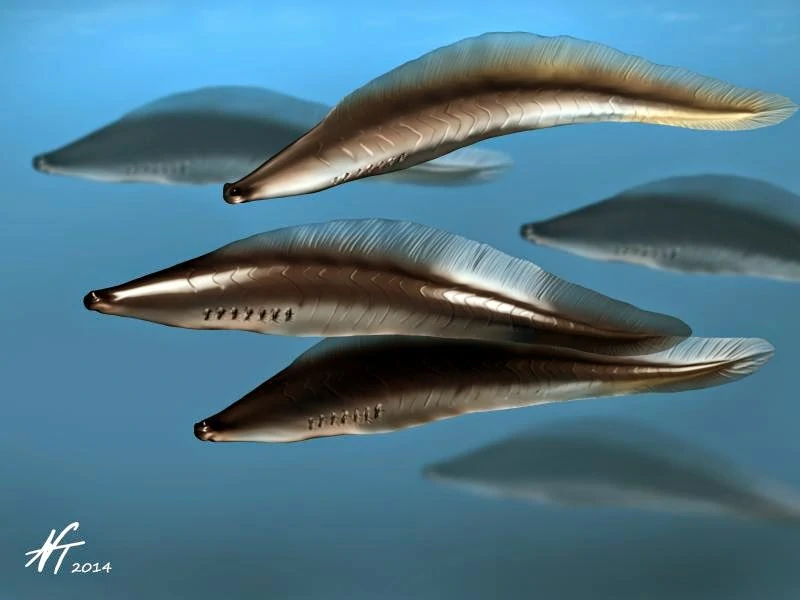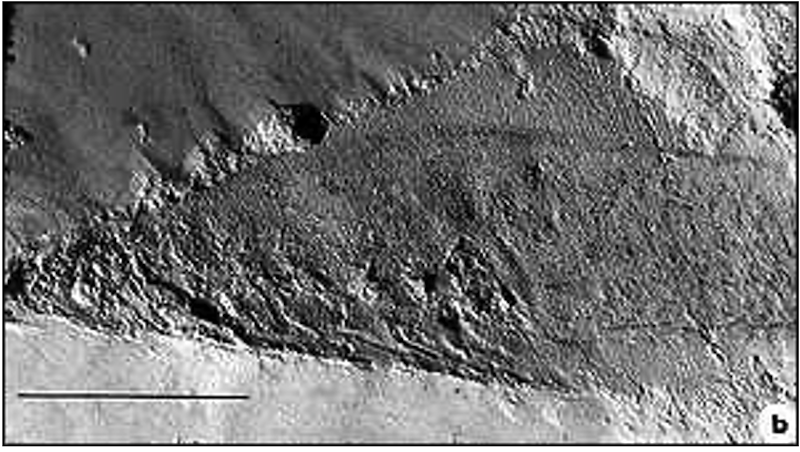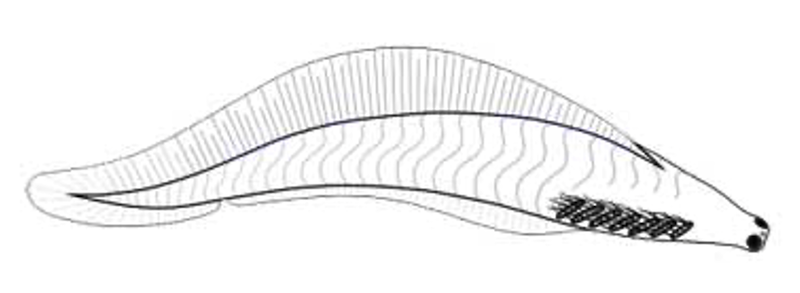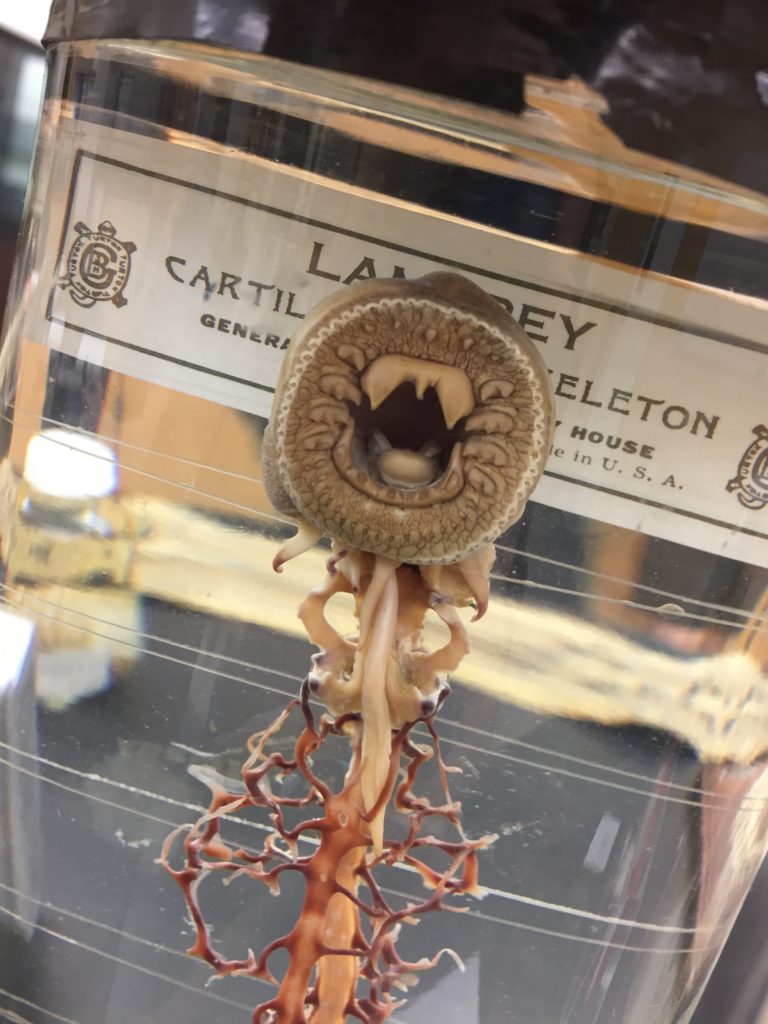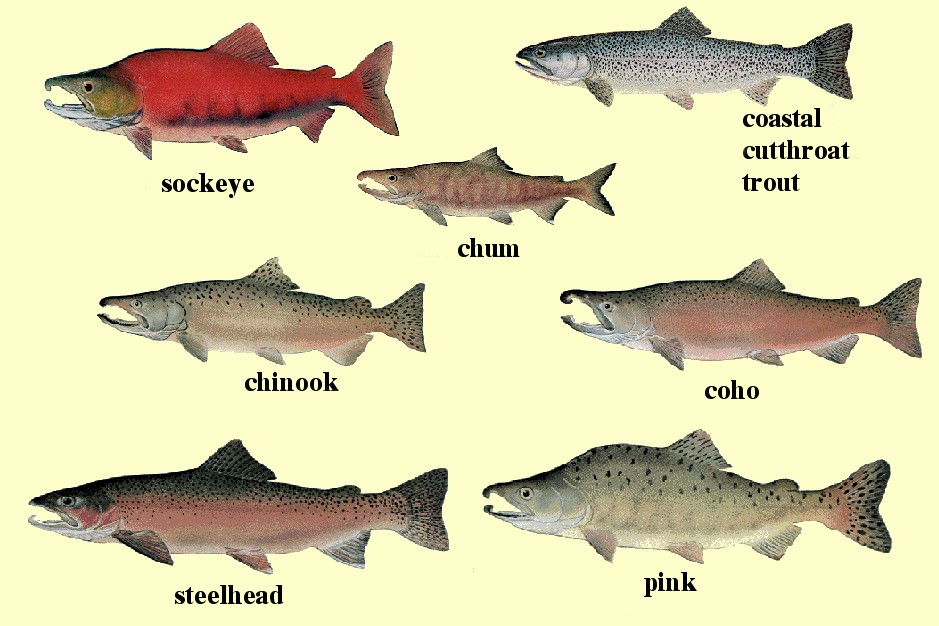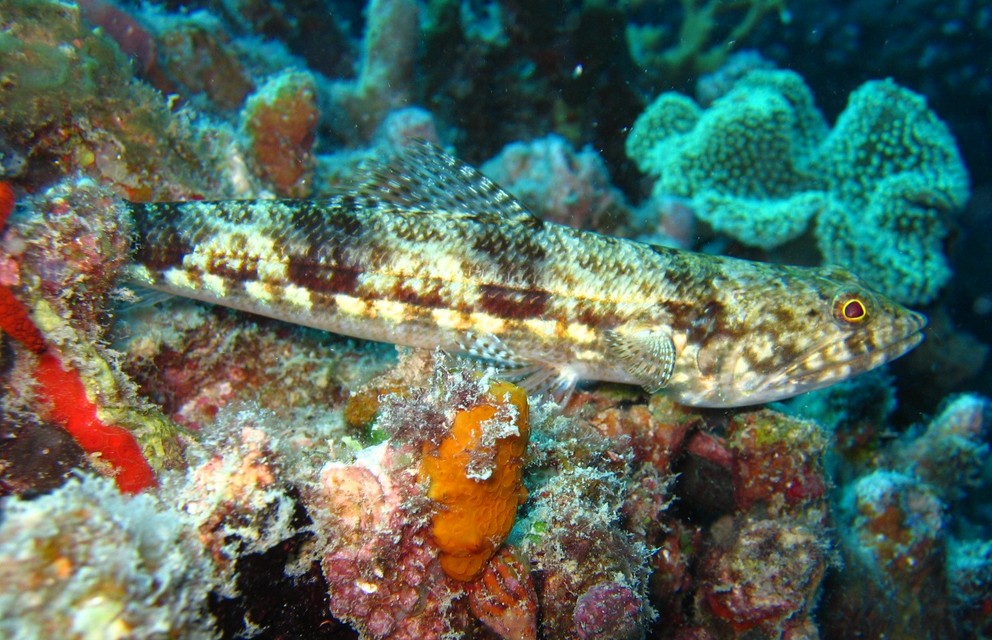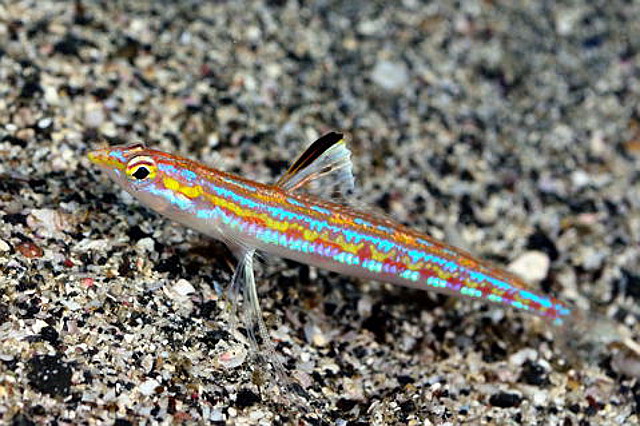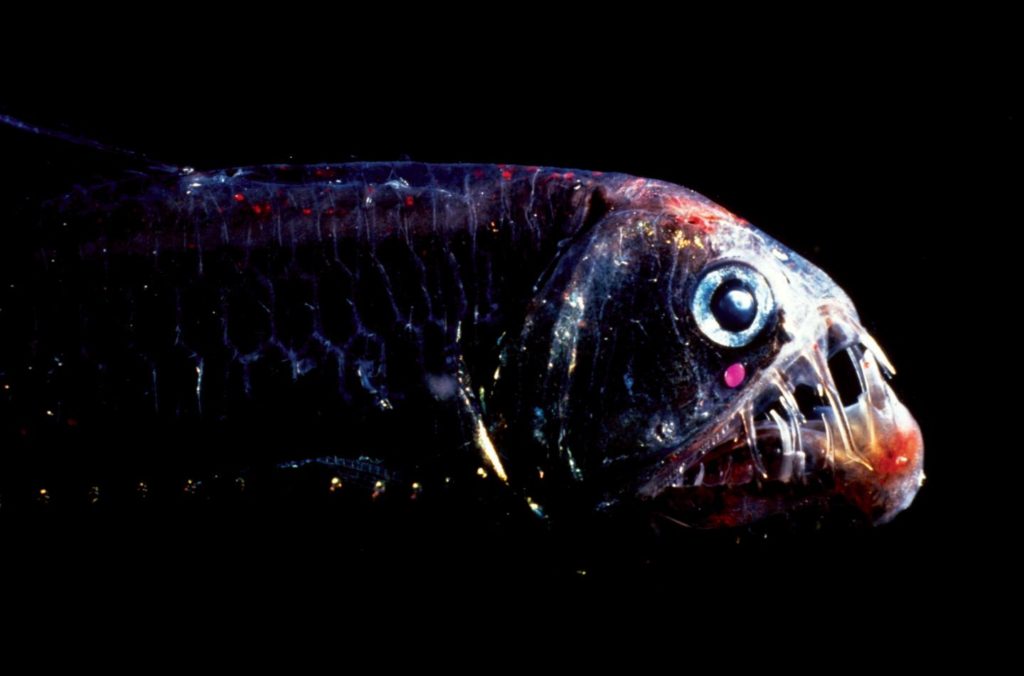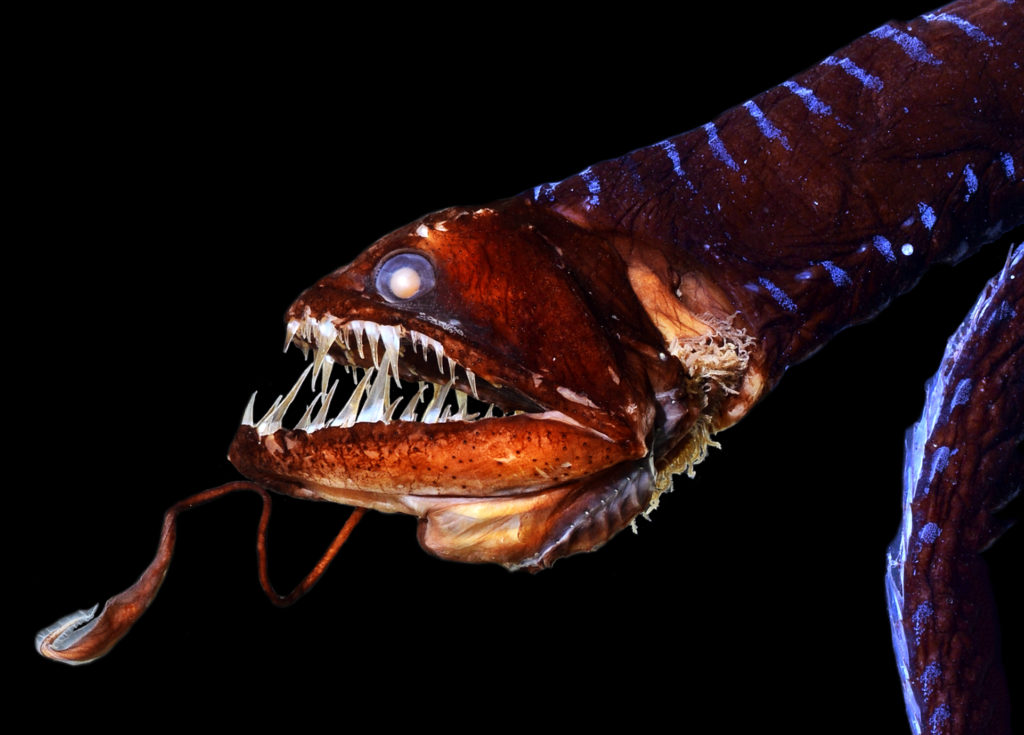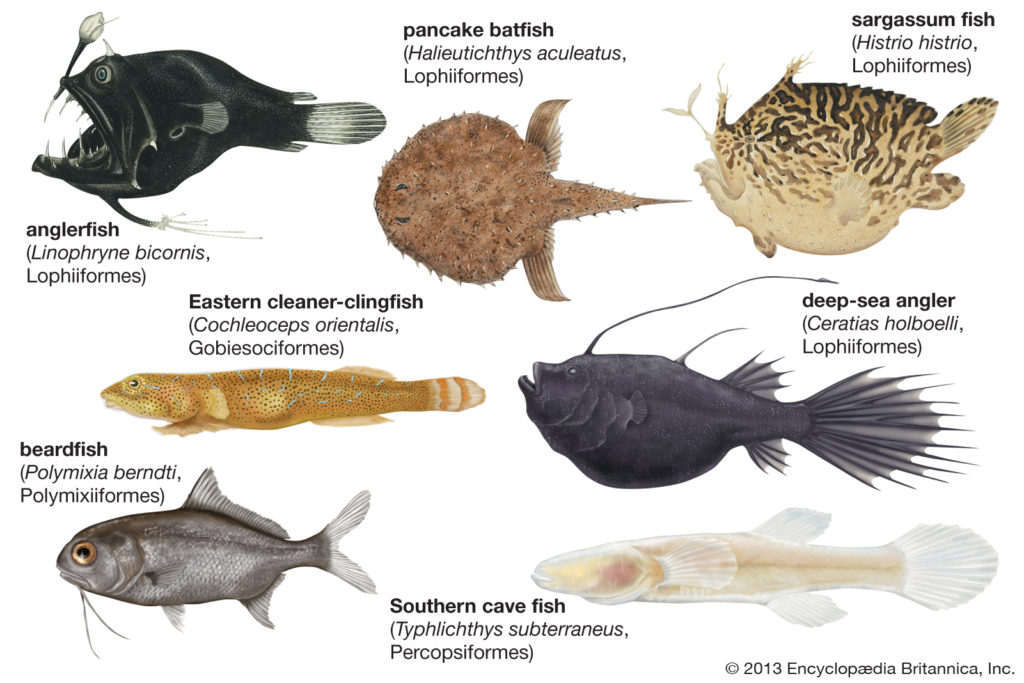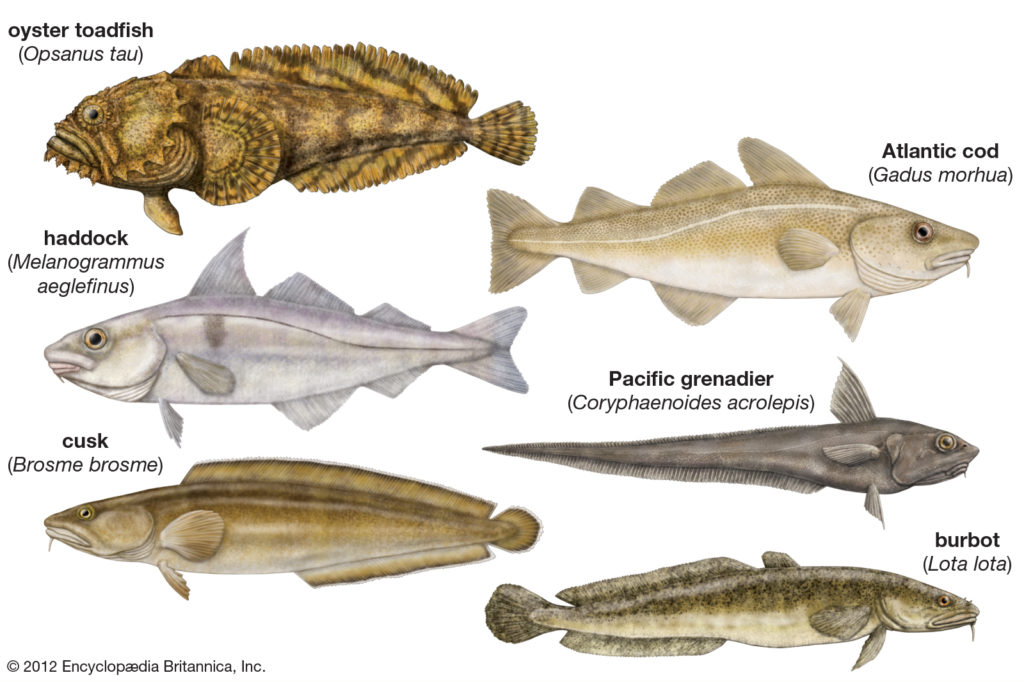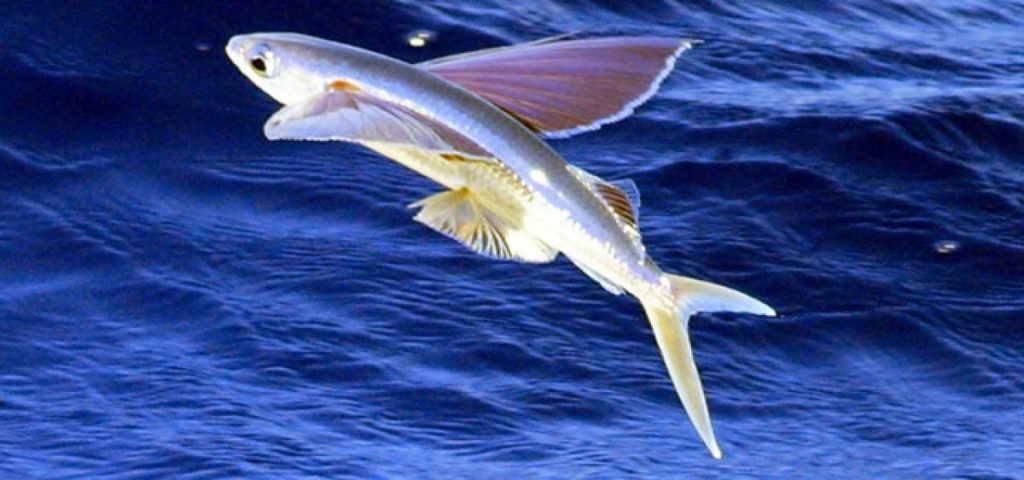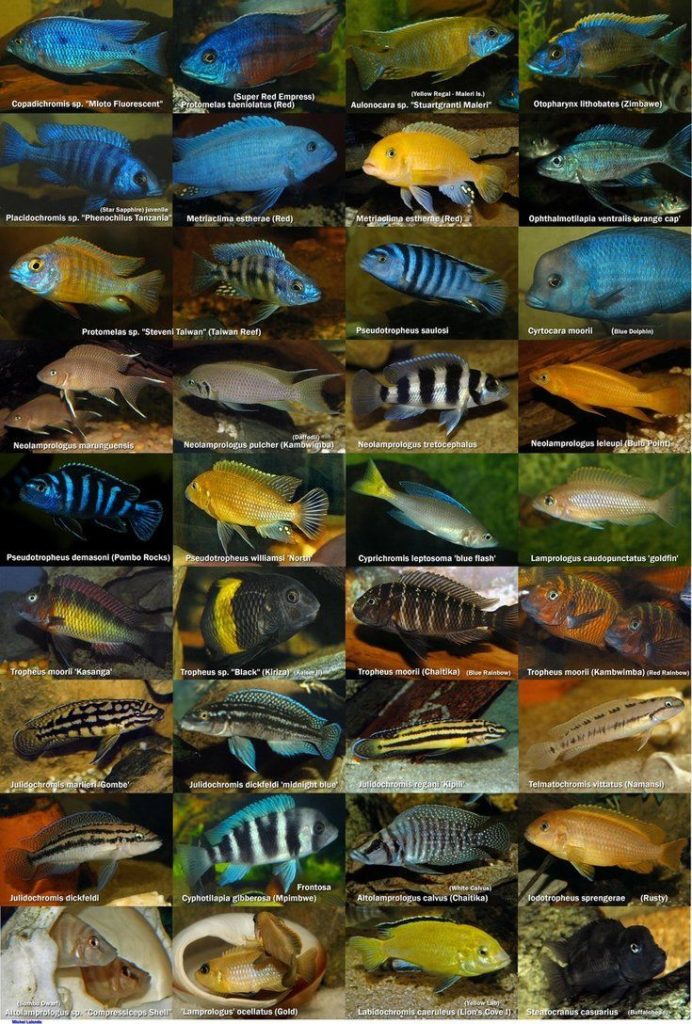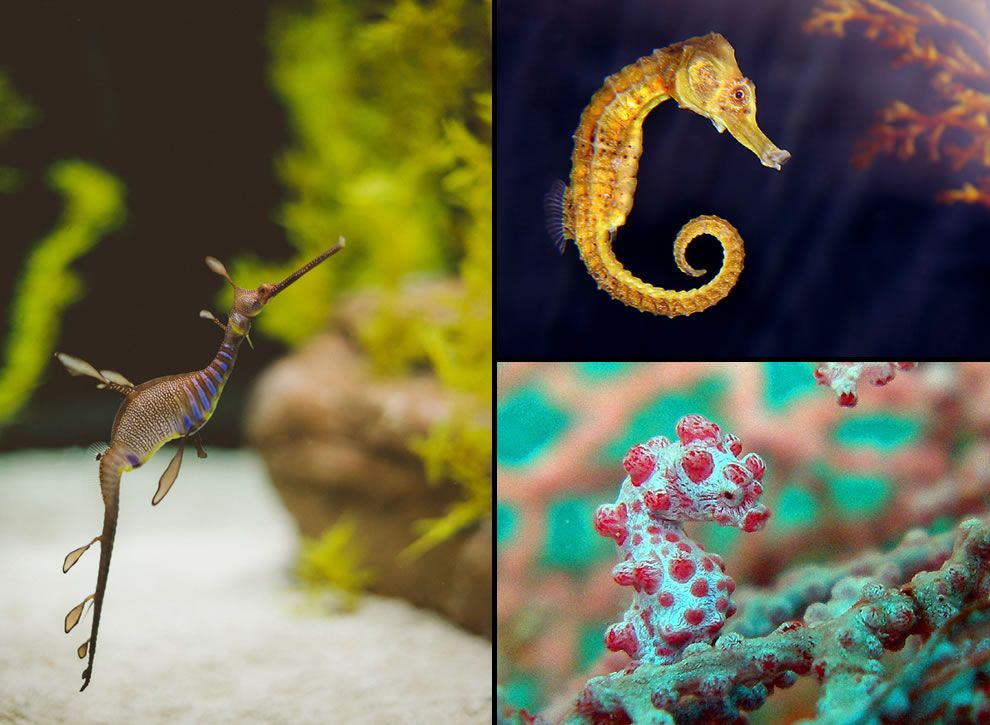
Station 1: Pre-Vertebrates
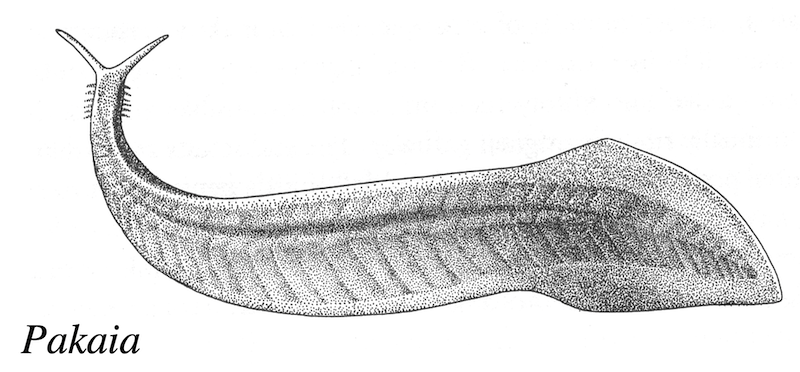
Pikaia
Cephalochordate (~ 5cm)
Pikaia gracilens, known only from the Middle Cambrian Burgess Shale lagerstatte of British Columbia, is a small species that is likely important for understanding the features of early chordates.
Structures:
Myomeres
Notochord

Haikouella lanceolata
Structures:
Notochord
Paired fin-folds
Well developed brain and eyes
Large, laterally compressed body
Elongate branchial region with six gill arches, with gill rays lateral to the arches (possibly external)
Myomeres (not chevron-shaped)
No cranium
1. Name two examples of fossil forms that serve as early models of prevertebrates
2. What characteristic(s) are missing that suggest that these are still transitional forms, but not quite Vertebrata yet?
Station 2: Agnathans
Early Agnathans
The earliest undisputed vertebrate remains are represented by isolated dermal bone fragments from the base of the Horn Valley Siltstone, and probably also from the top of the Pacoota Sandstone, of the Amadeus Basin in central Australia. They are dated as Early Ordovician and referred to a group of armored jawless vertebrates, the Arandaspida. All other earlier fossils referred to the vertebrates remain more or less heatedly debated with the exception – to date – of Myllokunmingia and Haikouichthys, from the Lower Cambrian of Chengjiang, China.
- Structures:
- Jawless
- Cranium with sensory structures
- W shape myomeres
- No evidence of bone or mineralized scales
Haikouichthys
Myllokunmingia
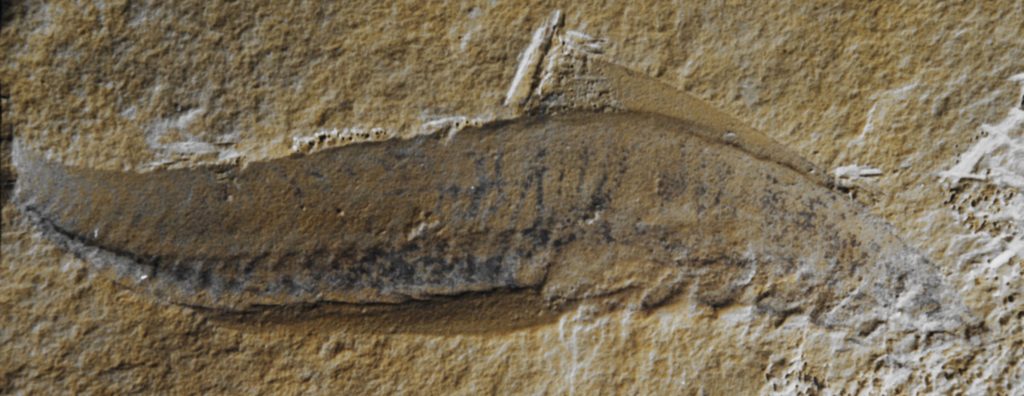
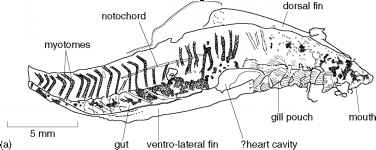
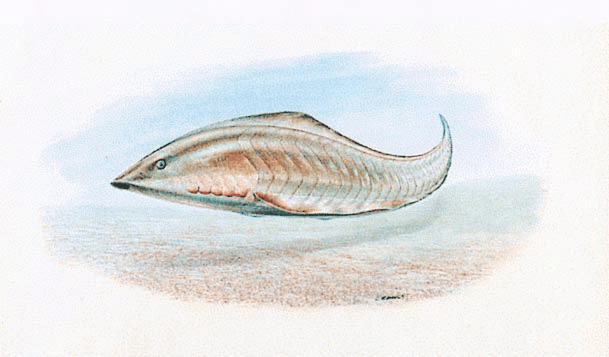
Myllokunmingia 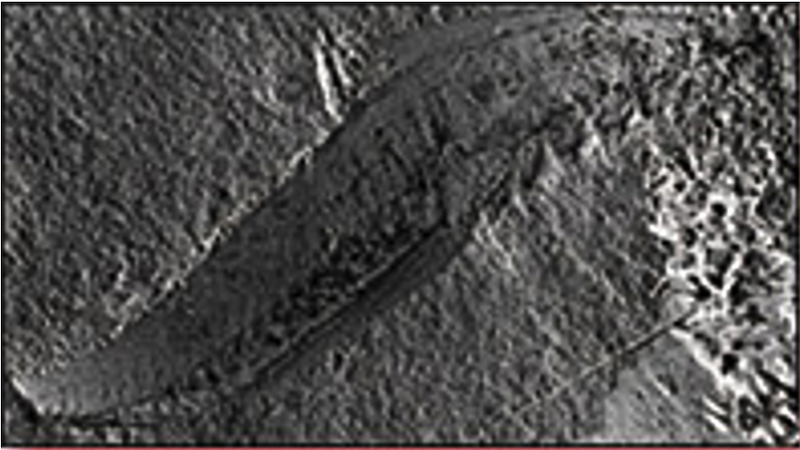
Text adapted from Ph. Janvier, C. R. Palevol 2 (2003). Académie des sciences. Published by Éditions scientifiques et médicales Elsevier SAS.
Ostracoderms (Extinct jawless fishes)
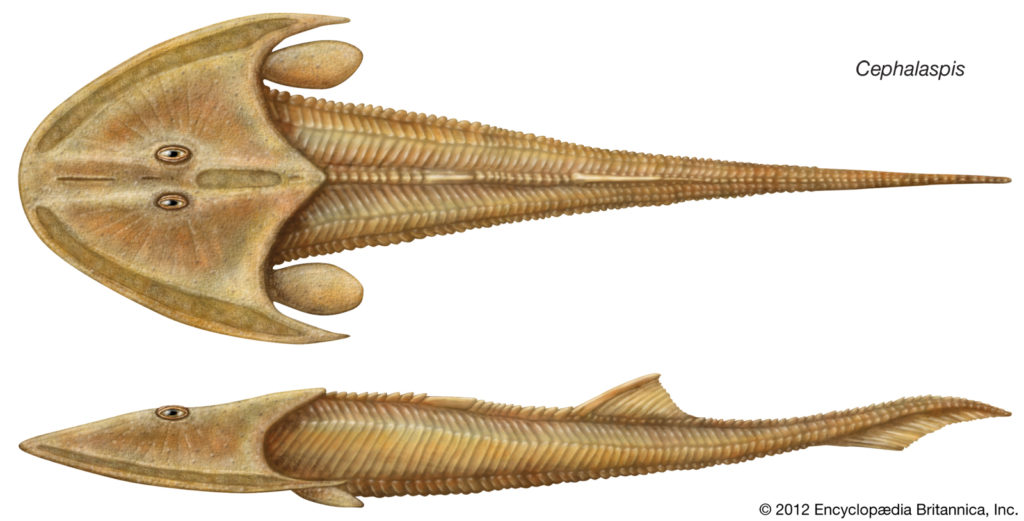
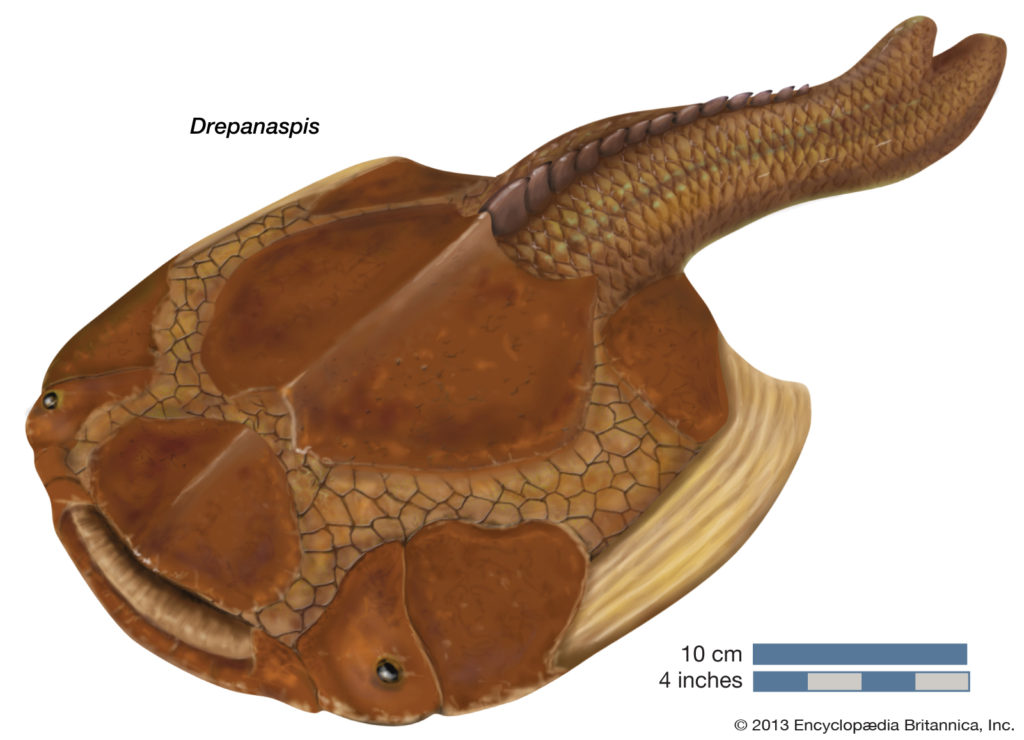

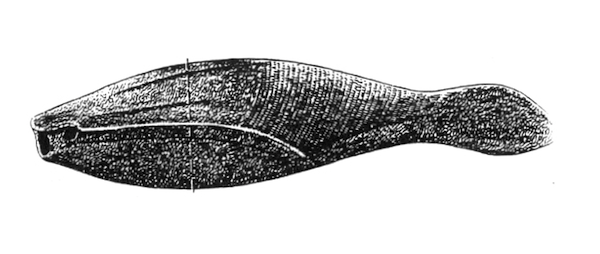
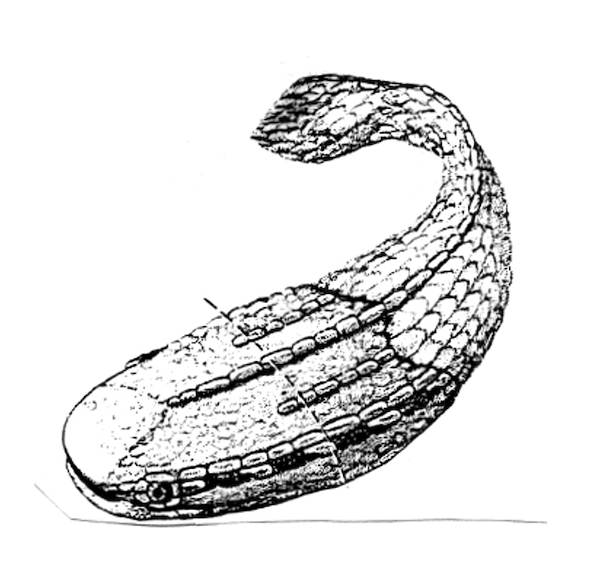
For more Ostracoderms, visit this link: https://www.digitalatlasofancientlife.org/learn/chordata/jawless-vertebrates/
Agnathans
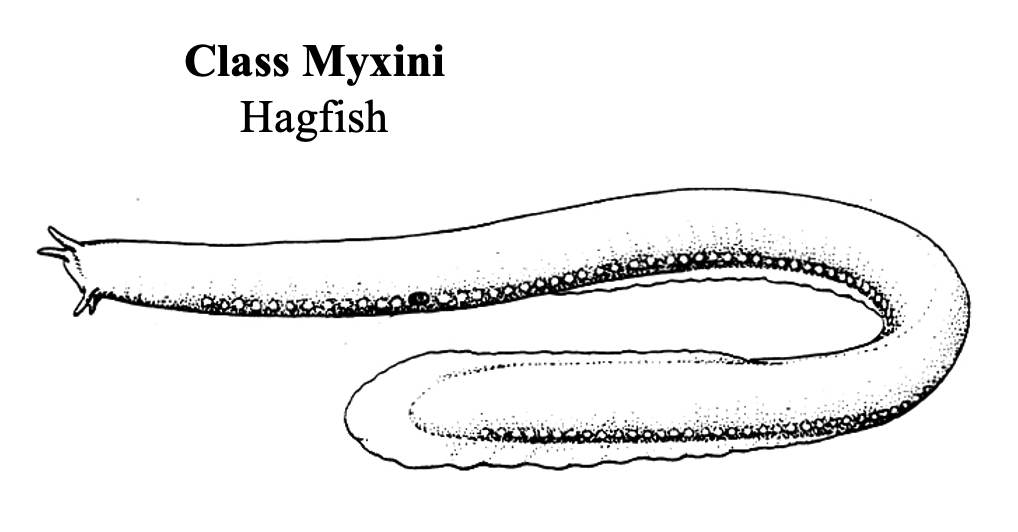
Class: Mixini
Hagfish
- Structures & Development:
- Partial cranium
- Rudimentary vertebrae
- Skeleton composed of cartilage (lacks bone)
- Lacks jaws
Undergo direct development (no larval stage)
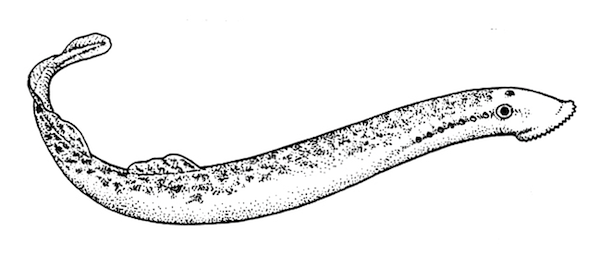
Class: Petromyzontida
Lamprey
Sister taxon to Hagfish
- Structures:
- Cartilaginous skeleton
- Instead of true vertebrae, they have a series of cartilaginous structures called arcualia arranged above the notochord.
1. Name four characteristics that characterize vertebrates, distinguishing them from other animals.
2. What does Agnathan mean?
3. Which fossil forms are considered the earliest vertebrates and what are some of their characteristics?
4. Why is it becoming difficult to classify the beginning of the subphylum Vertebrata?
5. What distinguishes hagfish from all other vertebrates?
6. How do lamprey make their living? Are they found locally?
7. Examine the lamprey cross sections and skeleton and identify chordate characteristics and gill arches.
8. See if you can get an idea of the form of the vertebrae in the lamprey.
Station 3: Placodermi and Acanthodi
Gnathostomes
Gnathostomes (“jaw-mouths”) are vertebrates that possess jaws, hinged structures attached to the cranium that allow an animal to grasp and tear its food. Early gnathostomes were jawed fishes that possessed two sets of paired fins, which increased their ability to maneuver accurately. These paired fins were pectoral fins, located on the anterior body, and pelvic fins, on the posterior. The evolution of these traits allowed gnathostomes to expand from the sedentary suspension feeding of jawless fishes and become mobile predators. This ability to exploit new nutrient sources led to their evolutionary success during the Devonian period.
Two early groups of gnathostomes were the acanthodians and placoderms, which arose in the late Silurian period and are now extinct. Most modern gnathostomes belong to the clades Chondrichthyes and Osteichthyes. Gnathostomes later evolved into all tetrapods (animals with four limbs) including amphibians, birds, and mammals.
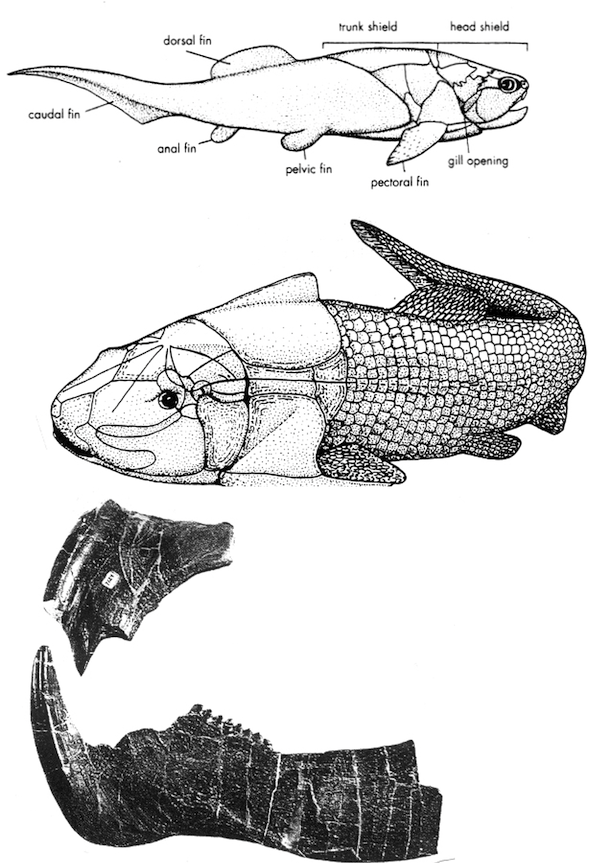
Class Placodermi
Placoderms: Armored Fishes (“plate-skinned”)
- Structures:
- Head and thorax covered by armored plates
- Jaws likely evolved from the first of their gill arches, in most species consisted of a single bone
- True teeth
- Pelvic fins
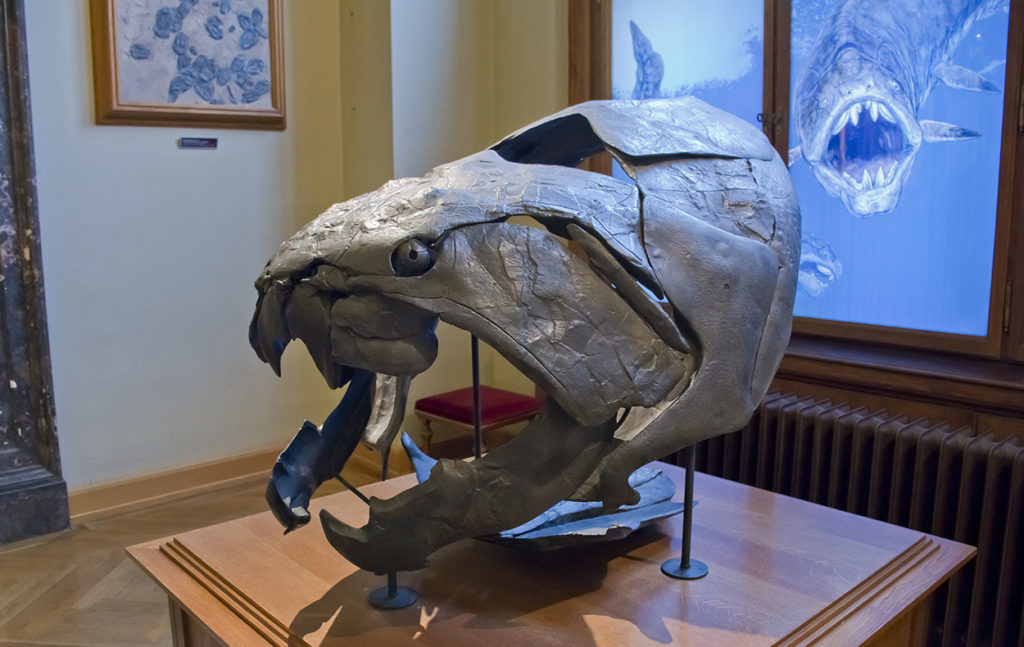
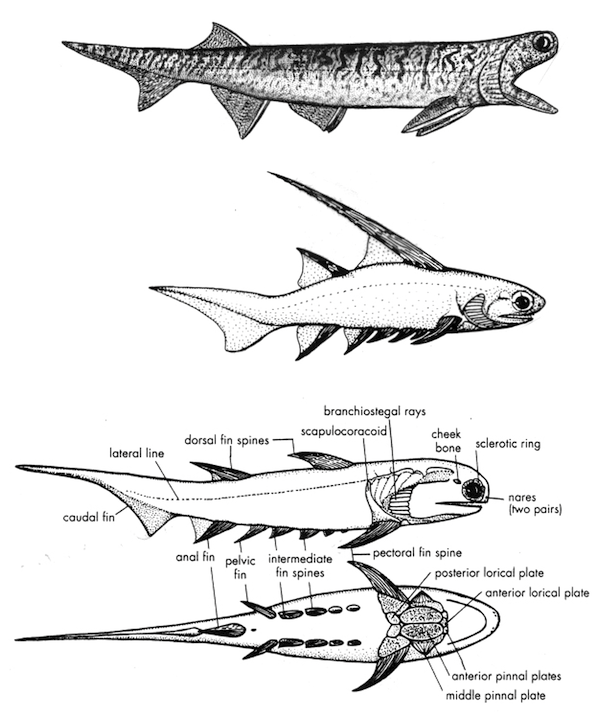
Class Acanthodi
Acanthodians
Spiny Sharks
- Structures:
- Epidermis covered with tiny rhomboid platelets
- Cartilaginous skeleton
- Fins with wide, bony base, reinforced on anterior margin with a dentine spine

Station 4: Chondrichthyes
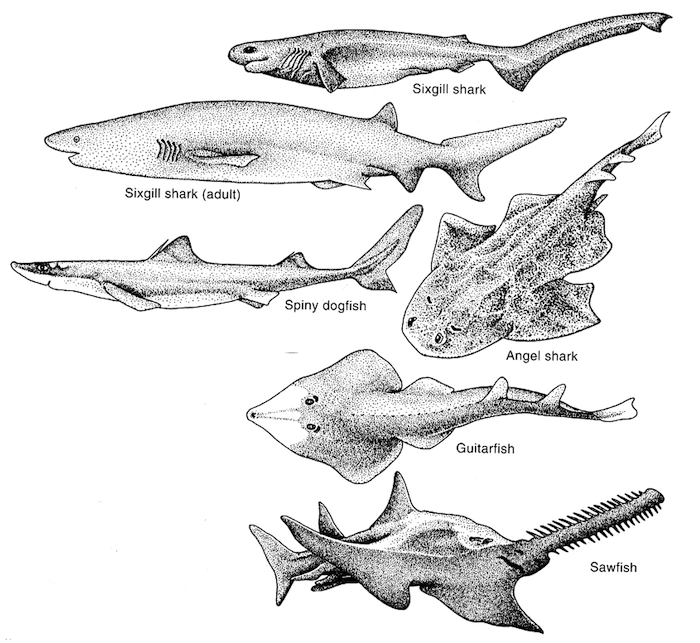
Subclass Elasmobranchi
Superorder Squalea
Squaleid Sharks represent a broad range of body plans within Elasmobranchs
- 11 orders of sharks and other fishes
- Many bottom dwelling forms (flattened body plan, mouth and gill slits on bottom, eyes and spiricles on top of head)
- Angel sharks: intermediate between squaliform sharks and rays
- Sawfishes have external teeth attached to snout, slash through fish schools
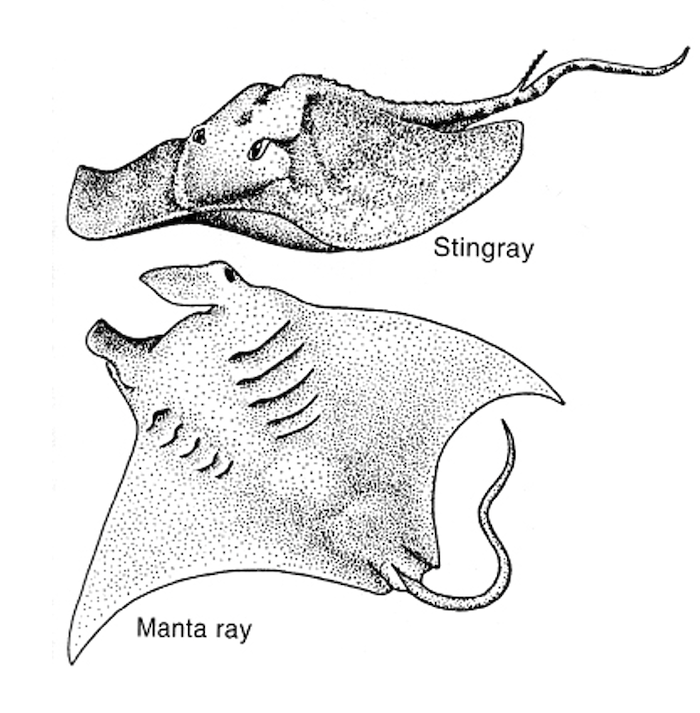
Subclass Elasmobranchi
Superorder Squalea
Batoidea: Skates and Rays
- Batoidea (Skates and Rays) found within the Squalea
- Taxonomy in dispute (6 orders or 1 order?)
- Characterized by enlarged pectoral fins attached to side of head, ventral gill openings, blunt crushing teeth
- Skates are closely related to guitar fishes
- No natural biological difference between skates and rays (terms often used interchangably)
Station 4 (continued): Chondrichthyes
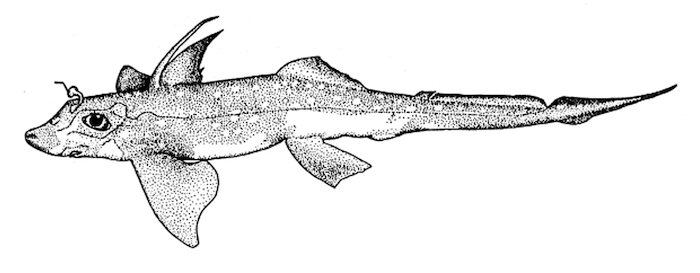
Subclass Holocephali Ratfish or Chimera
- Long, independent evolutionary history from Elasmobranchs
- Note long slender tail
- Note clasper on head in males, used for reproduction
- About 30 species
- Bottom dwelling in deep water
- Note gill flap over gill slits (atypical for chodrichthyes)

Subclass Elasmobranchi
Superorder Galea
- Galeid Sharks are part of the Elasmobranchs
- Typically have classic “shark” shape
- Mostly large pelagic forms with blade-like teeth
- Contain largest fish, the whale shark (up to18m long)
- Examples of other galeid sharks include white shark, tiger shark, thresher shark, leopard shark, basking shark, hammerhead shark
Cartilaginous Skeleton
- *Locate the jaws of the shark
- Note how the jaws are only loosely associated with remainder of cranium
- The jaws look like specially adapted gill arches (and are)
- Jaws and gill arches are derived from different tissues than the rest of the skull
- *Find the Meckel’s Cartilage, Hyomandibula, Gill Arches, and Palatoquadrate

- * Note the difference between the trunk vertebrae and the tail vertebrae
- *Note the simple limb structure (four basics components)
- Girdle – Basal – Radial – fin rays -find the Radials and the Ceratotrichia in the fins -what bones make up the girdle and the basal structures in the pelvic and pubic regions? -what difference do you notice between the association of the axial skeleton and the pubic girdle vs. pelvic girdle?
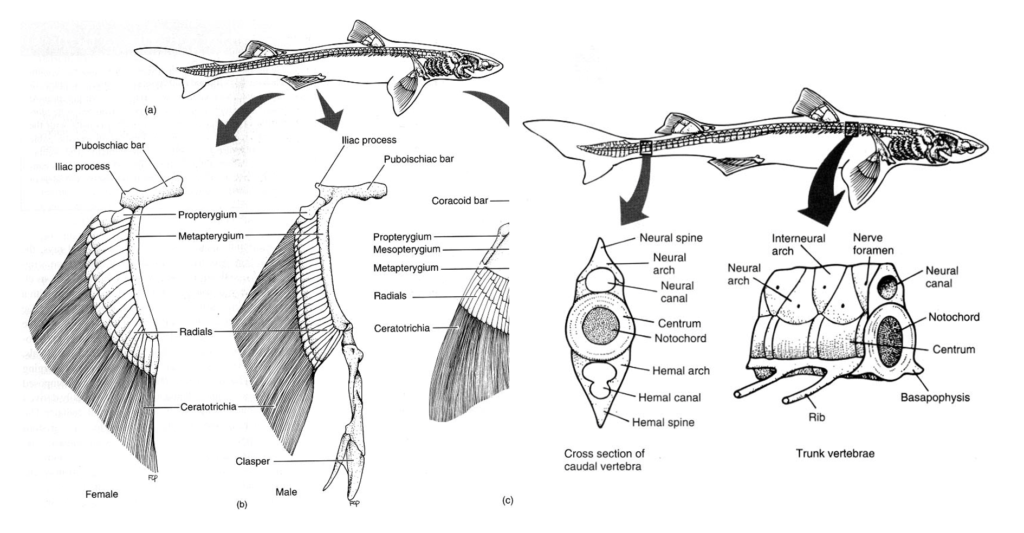
1. What major characteristic typically distinguishes the Chondrichthyes as a group from other Gnathostomes?
2. What is the common name for the Holocephali and how might you remember (by looking at it) where it falls in a phylogeny of fishes?
3. What are the two major groups of Elasmobranchs, and which are recognized as the “classic” sharks?
4. What is the difference between a skate and a ray?
5. What are four characteristics of a bottom dwelling Chondrichthian?
6. On the shark skeleton, identify the the Meckel’s Cartilage, Hyomandibula, Gill Arches, and Palatoquadrate
Station 5: Actinopterygii I
Class Osteichthyes – Bony Fishes
SubClass Actinopterygii: Ray-finned Fishes
InfraClass Chondrostei
Order Polypteriformes: Bichers
- -Palaeoniscoids – many extinct forms -considered to retain primitive
- characteristics
- – Cartilaginous Skeletons
- – Bichers very primitive, posses ganoid scales
- – lobed fins, but not Sarcopterygian
- – can breath air under low O2 conditions in African swamps
- – 5-18 dorsal finlets

InfraClass Chondrostei
Order Acipenseriformes: Sturgeons and Paddlefishes
- – Sturgeons have five rows of bony scutes
- remnants of ganoid scales
- – old forms of both sturgeon and paddlefishes found in fossils
- – Paddlefish have paddle-like snout used to detect prey
- by sensing their electric fields

InfraClass Neopterygii
Order Amiiformes: Bowfins
- – bowfin is a single species found in the Mississippi river
- – previously abundant
- – can use swim bladder for airbreathing
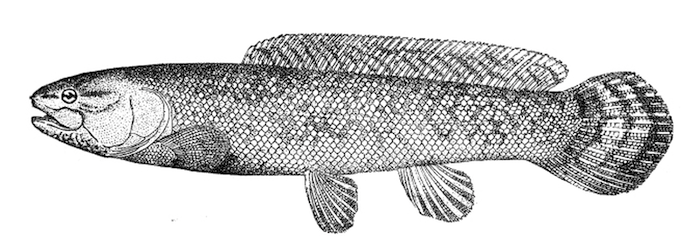
InfraClass Neopterygii
Order Lepisosteiformes: Gars
- – There are 7 species of gar, all freshwater
- – retain ganoid scales over body
- – ambush predators
- – can use swim bladder for air breathing

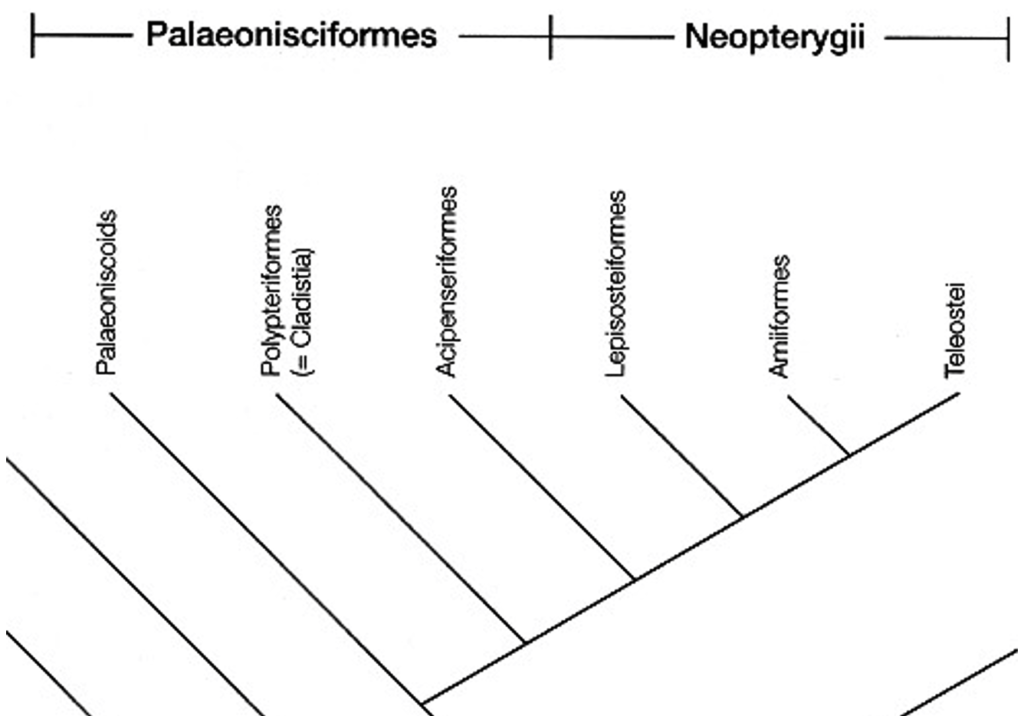
1. What is the common name for the Actinopteryigii?
2. Which groups form the palaeoniscoid fishes?
3. How would you distinguish a sturgeon by looking at it?
4. Name three major lineages within the Neopterygian fishes.
Station 6: Actinopterygii II (Teleostei)
Class Osteichthyes – Bony Fishes
SubClass Actinopterygii – Ray-finned Fishes
Infraclass Teleostei
Main Branch of Fish Evolution
Contains 42 orders, 431 families, and 23,681 species
Defined by typical Homocercal Tail (symmetrical caudal fin)
However, some groups have diverged from this condition
- The Teleosts have four Major lineages
- Osteoglossomorphs
- Elopomorphs
- Clupeomorphs
- Euteleosts – containing 94% of teleost forms
Superorder Osteoglossomorpha
Bony Tongues, Electric Fishes
Fish in this group allied by bony teeth on tongue

Infraclass Teleostei
Superorder Elopomorpha
Tarpons, True eels, Spiny eels


Infraclass Teleostei
Superorder Clupeomorpha
Herring, Shad, Sardines, Anchovies
Characterized by massive schools
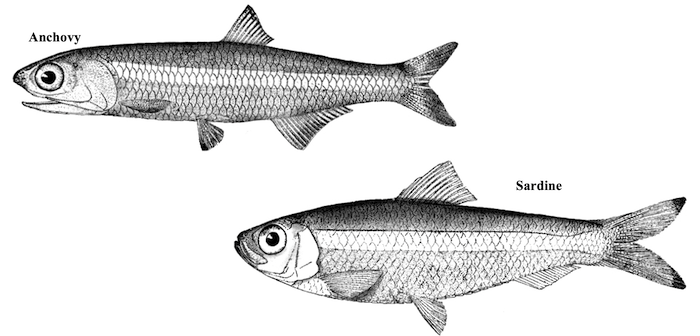
Infraclass Teleostei
Euteleostei
- SuperOrder Ostariophysi – Minnows, Catfish, Characins
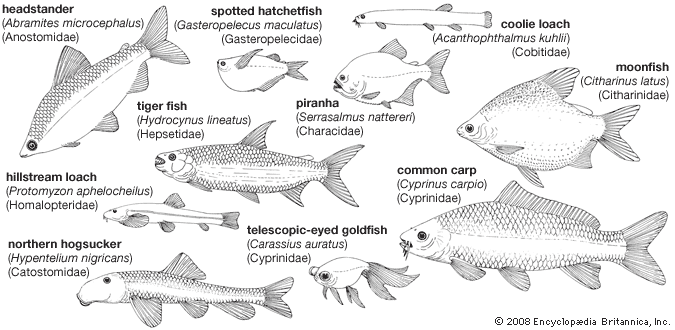
- SuperOrder Protocanthopterygii – Salmon, Trout, Pike, Smelt
- SuperOrder Stenopterygii – Contain Stomiiformes (dragonfish, hatchetfishes)
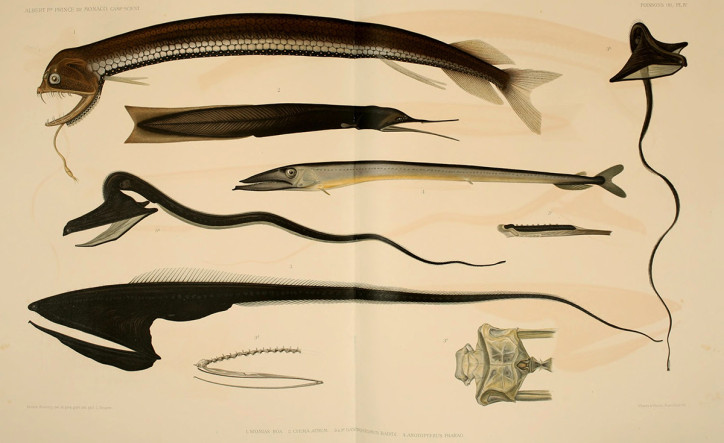
- SuperOrder Cyclosquamata – Contain Aulopiformes (lizard fishes, sabertooth fishes)
- SuperOrder Scopelomorpha – Contain Myctophiformes (lantern fishes)
- SuperOrder Paracanthopterygii – cod, cave fishesSuperOrder Acanthopterygii – flying fishes, splitfins, pupfishes, Pipefish, Seahorses, Sculpins, Cichlids, Gobies, Flounders, Puffers, Barracudas
1. What do we call the group of Teleosts that contain about 94% of teleost species?
2. Which group is the largest in terms of species?
3. Name four major groups of Teleost Fishes
4. What the Osteoglossomorphs known for?
5. In most cases how can one identify an Elopomorph?
6. What behavioral characteristic is typical of Clupeomorphs?
7. What are Weberian ossicles and which group of Euteleosts have them?
8. What do anadromous fishes do?
Station 7: Sarcopterygii
Class Osteichthyes – Bony Fishes
SubClass Sarcopterygii: Lobe-finned Fishes
Infraclass Dipnoimorpha: Lungfish
- – three families of lungfishes
- – Australian form primitive,
- unpaired lung, flipper-like fins
- – South American form and
- four African species more derived,
- paired lungs, eel-like bodies,
- filament-like fins
- – breathes air to survive dry season when O2
- levels in shallow waters depleted
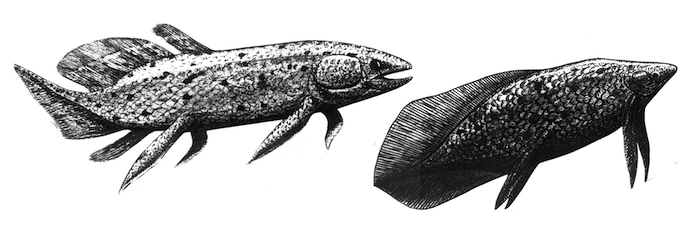
InfraClass Actinistia: Coelocanth
- – previously considered extinct
- – 1938 caught by local fisherman off Mozambique coast
- – second specimen not found until 1952 from deep
- trenches around Comoro Islands (3000 km away)
- local fishermen knew of this species well
- – first observed in natural habitat in 1987
- – bones of paired fins articulate with pelvic and pectoral
- girdles
- – however, does not “walk” on the bottom – neutrally
- buoyant via fat-filled swim bladder

View the video on this page: https://www.eurekalert.org/pub_releases/2019-04/fu-fto041619.php
1. What does the term Osteichthyes mean?
2. What are the two major groups within Osteichthyes?
3. What typically characterizes the Sarcopterygian fishes from other fishes?
4. Which group of Sarcopterygians are freshwater fish and which are marine bottom dwellers?
5. Which of these is the direct ancestor to tetrapods?
6. Although Bichers, upon close examination, retain the features of a primitive Actinopterygian, why have some confused them with Sarcopterygians?
